Steve Wolfe takes a close look at the new Creo line of CAD applications from PTC, answering the questions he raised last month. There are reasons for existing Pro/Engineer and CoCreate users to be happy, and reasons for them to ask even more questions.
By L. Stephen Wolfe, P.E.
On June 6, 2011, before the release of Parametric Technology’s Creo 1.0, I summarized what PTC had told the world about Creo and posed some questions that I hoped would be answered at the forthcoming Planet PTC Live conference in Las Vegas. (See “PTC Creo 1.0: Breakthrough technology?”)
Before getting to the answers, it’s important to clear up some misconceptions about Creo 1.0 that have been bandied about the Internet. First, the Creo applications (“apps” in PTC parlance) released in June 2011, are not all-new-from-the-ground-up software. Only one, Creo Direct has a mostly new code base, and it isn’t wholly novel. It employs the Granite kernel that has been the core technology of Pro/Engineer since the late 1980s. The other five apps are derivatives of existing products or upgrades to existing products.
The most important of the new apps is Creo Parametric. This software is as familiar to experienced Pro/Engineer users as an old pair of slippers and perhaps as comfortable. It could have as easily been dubbed Pro/Engineer Wildfire 6. Most of the functions that are supposed to be broken out in future Creo apps—drafting, rendering, analysis, and NC tool programming—are still executed from within the Parametric app using the same extensions employed in Wildfire 5 (renamed Creo Elements/Pro in October 2010).
Nevertheless, Creo Parametric has significant new improvements that make it an attractive upgrade from Wildfire 5. The most obvious is the presence of a top-level user-interface ribbon bar.

The ribbon bar organizes the Creo Parametric commands onto tabs that make them easier to find. Sketch functions are shown on one tab. 3D modeling commands for both surfaces and solids are shown on the Model tab. The Annotate tab allows dimensions and tolerances to be applied directly to the 3D model, and the Render tab makes photorealistic images.
When a drawing file is opened, the ribbon bar changes to display drawing functions. The layout tab controls sheet sizes and views. The Table tab has tools for adding tables and parts lists to sheets. The Annotate tab lets drafters add notes, dimensions, and symbols, and so forth.

Flexible Modeling Extension
The most important improvements to Creo Parametric 1.0 are the Flexible Modeling extensions shown on a separate tab in the ribbon bar.

Flexible Modeling functions operate only on the boundary representation geometry of Creo part models. They enable designers to select faces or recognize features such as bosses, cuts, and rounds and move them without regard to underlying feature constraints. Faces may be moved by dragging or by keying displacement values. A “3D dragger” ball may be attached to a face or feature to help control its movements. Flexible modeling is, in effect, PTC’s response to Siemens’ Synchronous Technology, announced in 2008.
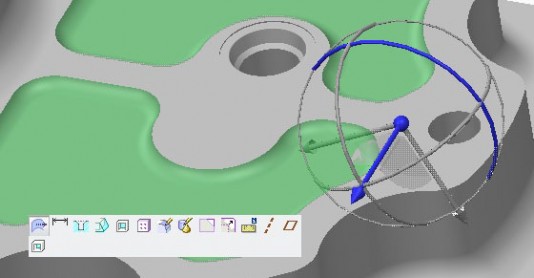
Unlike Synchronous Technology, Creo’s Flexible Modeling doesn’t supersede or invalidate existing sketch-based features. Instead, PTC adds flexible features to the feature-history tree. This software architecture enables direct-face edits to be rolled back or deleted, returning the model to its original form. Flexible-modeling features also work on imported solids from other systems that have no feature history.
Subdivision surfaces
The second major improvement to Creo 1.0 is the addition of subdivision surfaces to the 3D part-modeling toolset. Subdivision surfaces are used for free-form or ergonomic styling and assure that C2 continuity across surface boundaries is maintained regardless of how the surfaces are pushed or pulled. PTC’s so-called Freestyle surface tool also allows hard edges to be added to surfaces if and when they are desired. A YouTube video of the Freestyle surfaces in action can be seen below:
Subdivision surfaces are close relatives of the third-party T-splines extensions for Rhino and SolidWorks. See “Exploring the best new technologies and innovative products at SolidWorks 2011” and link therein. They are part of the next wave in CAD for industrial design, and PTC appears to have caught it.
Creo Direct
Creo Direct ($3,500) comes closest to being an all-new app. It combines PTC’s proven Pro/Engineer Granite kernel with redesigned direct-face modeling concepts from PTC’s Creo Elements/Direct (formerly CoCreate) software.
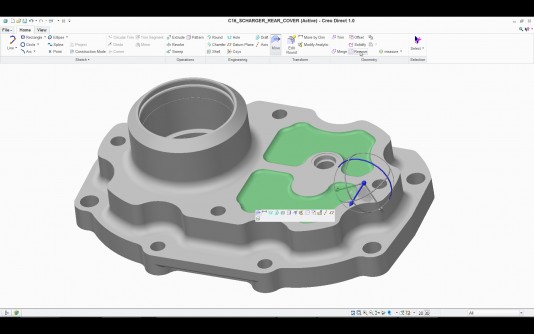
Like Creo Parametric, Creo Direct stores information and direct-face edits in the form of features. These features are not visible in a history tree in the Direct application. However, when a model is opened in Creo Parametric, designers can see the features in that app’s history tree. In a future release, PTC plans to incorporate a dialog that will enable Parametric users to accept or reject features added with Creo Direct.
PTC’s approach is supposed to allow the Creo Direct and Parametric apps to exchange information without any losses. However, if users of the Direct app inadvertently create excessive or redundant features without realizing what they are doing, they could make a mess for Parametric users to untangle.
Creo Direct lacks important capabilities found in the original CoCreate software such as sheet-metal features. Designers also can’t define sets of assembly constraints, as they can in Creo Elements/Direct or CoCreate. Although PTC plans to fix these shortcomings in future releases, the company will continue selling and developing Creo Elements/Direct for “several major releases over the next few years.”
Other new apps
The remaining new Creo apps are based on software from PTC’s existing portfolio. They include:
Creo Simulate for structural and thermal simulation based on Mechanica ($7,500).
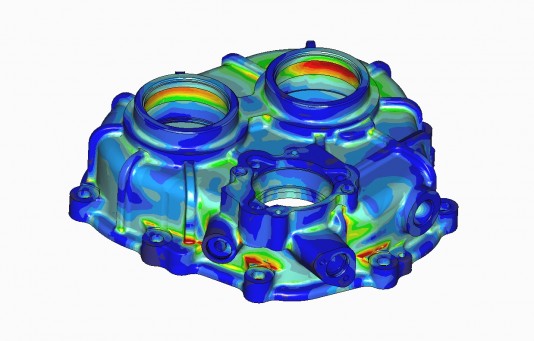
Creo Illustrate to communicate service information graphically in 3D ($10,000).
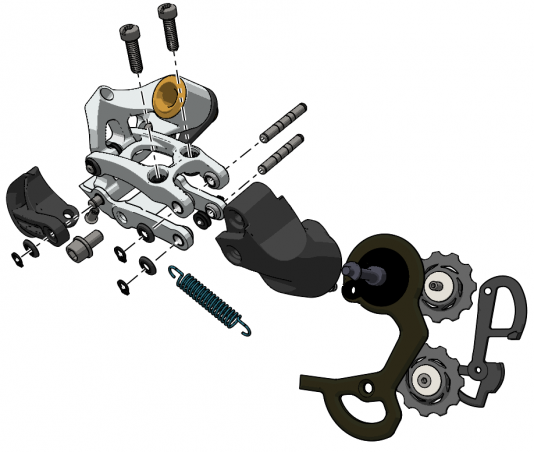
Creo View MCAD for those who want to view, interrogate, and mark up 3D CAD models but not edit them ($1,000 node-locked or $5,000 floating).
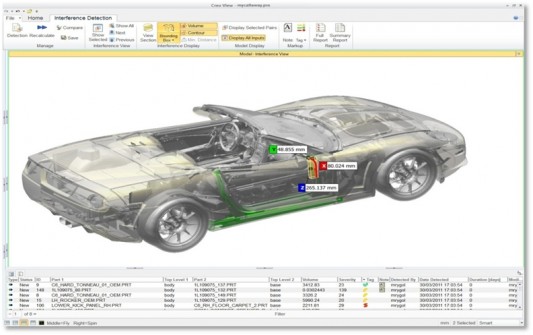
Creo Schematics for creating 2D routed systems diagrams such as cabling and piping ($5,000 node-locked).
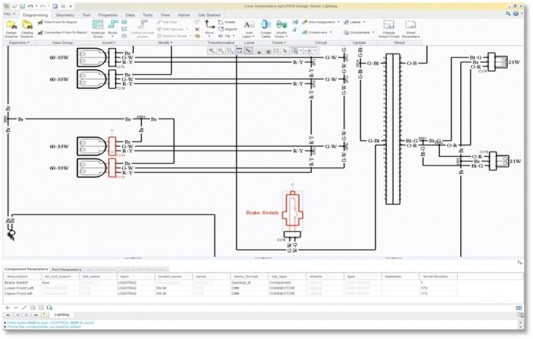
Creo View ECAD is another app for displaying and marking up designs of electronic printed circuit boards ($2,000 node-locked or $6,500 floating).
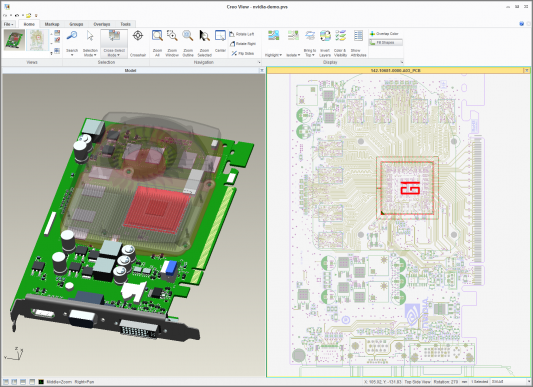
Some questions answered
So here’s what I learned from PTC in answer to the questions I raised last month:
1. What will be the upgrade paths from the Creo Elements (a.k.a. Wildfire 5 M080) packages to Creo application suites? Creo Parametric 1.0 effectively is Wildfire 6. So customers who are paying maintenance on the latest existing packages can upgrade to their Creo equivalents at no extra charge. Creo Parametric includes subdivision surface modeling at no extra charge. However, PTC is charging an extra $1,000 per license for the Flexible Modeling Extension (FMX). This charge has steamed at least one customer who commented on Josh Ming’s Solid Smack blog. He’s probably not alone.
2. How much will it cost to upgrade each Pro/Engineer or CoCreate user? Customers paying maintenance on the Foundation package need not pay extra for Creo Parametric unless they want the Flexible Modeling Extension. Those paying maintenance on the Pro/Engineer (or Creo/Elements) Advanced XE, Enterprise SE, and Enterprise XE packages can upgrade at no charge.
Customers with older packages should brace for a lengthy negotiation. PTC executives said they will not reduce the capabilities of any Creo packages. PTC is developing a spreadsheet tool to help customers and sales representatives sort out equivalent licenses.
3. When will the Creo apps have all the equivalent capabilities of Pro/Engineer Wildfire 5? Nothing has been lost in the Creo 1.0 release. Creo Parametric has all the capabilities of Wildfire 5 and some new ones.
4. How consistent are the user interfaces across all the Creo apps? This question is not relevant yet. Most PTC customers will use Creo Parametric, which is internally somewhat more consistent than previous Wildfire releases. However, there are still cascading menus lurking in some corners along with Wildfire dashboard controls and the Creo ribbon bar.
5. Will all changes made using direct-modeling techniques be represented as dimension-driven features in Creo Parametric? Or will changes made with direct modeling have to be recreated in the parametric program? Changes made with direct-modeling are stored as features in all Creo apps. Nothing must be recreated and no intent information is lost.
6. Are there direct edits that will cause parametric features previously created to fail? Yes. Creo Parametric allows designers to roll back the feature history and insert Flexible Modeling features anywhere in the tree. So they can create conditions that will cause children of these features to fail. However, the judicious use of Flexible Modeling features may save time in some cases.
7. What changes to the company’s Windchill PDM or Intralink software will be required to support Creo? Creo Parametric 1.0 requires Windchill 9.1 or Windchill 10. It does not work with Intralink 3.X. Windchill is not required to run Creo, although the Any BOM app to be released in March 2012 will require Windchill.
8. How much retraining will be required to use Creo? PTC recommends a one-day training course for experienced customers. Based on what I saw in a two-hour course at Planet PTC Live, this estimate seems reasonable. Experienced Pro/Engineer users appeared to catch on to Creo Parametric 1.0 quickly.
More questions remain
Review licenses of Creo Direct and Parametric with FMX have not been made available to writers and analysts. Relatively few PTC customers have had a chance to try these new Flexible Modeling capabilities because they must pay extra for them.
I have had some experience with other direct modeling systems, and they don’t necessarily work as well on real parts as they do in demonstrations. Features may fail depending on geometry. The number of calculations required for complex surfaces may prevent designers from dragging some features smoothly. Whether Creo will suffer similar shortcomings is as yet unknown.
The demonstrations of Creo at PTC Planet Live were impressive. Moreover, PTC’s strategy for combining direct and feature-based modeling seems well thought out.
PTC’s engineers and product managers seem genuinely excited about the new Creo CAD software in a way I haven’t seen for years. PTC’s new CEO, Jim Heppelmann, also appears to be enthusiastic about the upgraded product line. When executives and engineers are fired up, good things often happen.
PTC needs to become more aggressive in pricing the new Creo apps. FMX is the coolest thing in the new release. Everyone on maintenance ought to get it free. The Direct, View, Schematic, and Simulate apps also are too costly to spur the kind of widespread usage PTC envisions.
Creo licensing remains far too complex. There are too many software options. Apps are supposed to be simple and have everything needed to do a job.
Caveats aside, however, PTC appears headed in a good direction. Existing Pro/Engineer customers should think about upgrading to Creo Parametric sooner rather than later.
L. Stephen Wolfe, P.E. is a contributing analyst for Jon Peddie Research and a director of Cyon Research. He is the founder of the former CAD Report and CADCAMNet publications, later acquired by Jon Peddie Research, publisher of GraphicSpeak.





